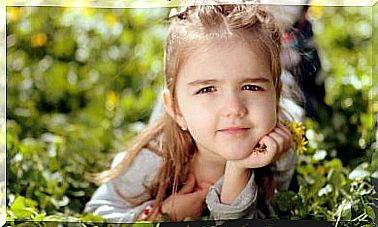Educating Children With Autism At School

Currently, it is intended that the education of children with autism in school is as inclusive as possible. Therefore, in the current educational system, several measures can be taken to include people with Autism Spectrum Disorders. In this way, a series of support resources and specialized attention are offered, providing a dignified and equitable education.
Education of children with autism at school
Students with autism can attend different types of schools, depending on the type of educational attention they need, according to the level of impairment of the disorder. Thus, these children can study in:
- An ordinary school.
- A special education school.
- Simultaneously in both types of schools.
Most of them attend a regular school, where they can be:
- In the common classroom, with specific adaptations and resources.
- In a special education classroom, where they receive more individualized learning.
But in addition, the school must also have a number of characteristics and resources necessary to provide good educational support to students with Autism Spectrum Disorder.

School characteristics to serve autistic children
As for the characteristics of the school, there are several measures that must be taken to adequately assist children with autism at school.
In this sense, to favor the autonomy of these students, it is interesting that the school is marked with pictograms in common areas. These visual indicators can be placed on the entrance door corresponding to each location.
In this way, the orientation of that group at school will be improved, allowing them to identify each room and the activity developed in them.
Furthermore, to facilitate the possibilities of anticipation, the environment must have a predictable and fixed structure, avoiding ill-defined and chaotic contexts. Therefore, it is necessary to promote a structured environment in which the child can learn about basic patterns of behavior and be sure of what is expected of him at all times.
Likewise, the head teacher should be responsible for providing the student with autism with education adapted to their needs in the regular classroom. Therefore, it is important that the teacher:
- Make the presentation of new concepts and abstract material concrete.
- Use practice-based learning as much as possible.
- Use graphic and visual support organizers.
- Present an informative visual board with instructions for handing in and completing assignments.
- Provide direct and example instructions.
- Use clear language and promote the values of living together in the classroom.
Specialized Teachers Necessary for Educating Children with Autism in School
If the student with autism does not have personal autonomy skills, it is necessary for the school to have a specialist in educational support. It has the role of supporting the tasks of:
- Surveillance.
- Caution.
- Help in the courtyard and in the cafeteria.
- Health and safety service.
- Assistance at specific times in the classroom.

On the other hand, it is necessary for the school to have teachers of therapeutic pedagogy (PT) and hearing and language (AL), who have the function of acting as a support for the teaching of this type of student.
They are responsible for selecting, preparing and adapting the teaching material to facilitate the assimilation of knowledge by this type of student, carrying out a specific intervention program.
In the case of intervention with children with autism, therapeutic pedagogy teachers should work, among many other things, on:
- Make them understand that their behavior can influence the environment.
- Teach them to relate to others in different situations and contexts.
- Help them understand and communicate their own emotions and thoughts as well as those of others.
In the case of hearing and language teachers, they should make interventions focused on learning:
- Real-life functional communication skills.
- Acquisition of verbal and non-verbal language.
- Ability to understand and react to environmental demands.
- Skills for starting and maintaining conversations.
This educational support is provided more or less per week and in a relatively individualized manner, depending on the specific needs of the child with autism.









